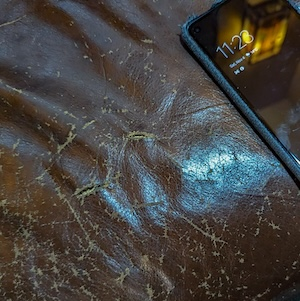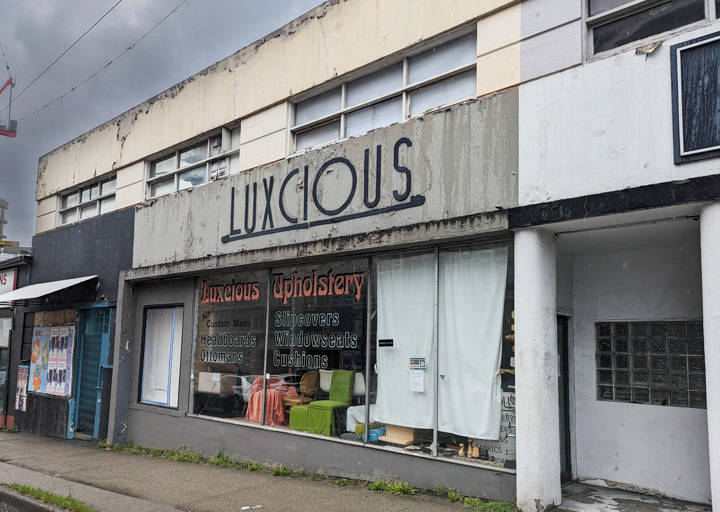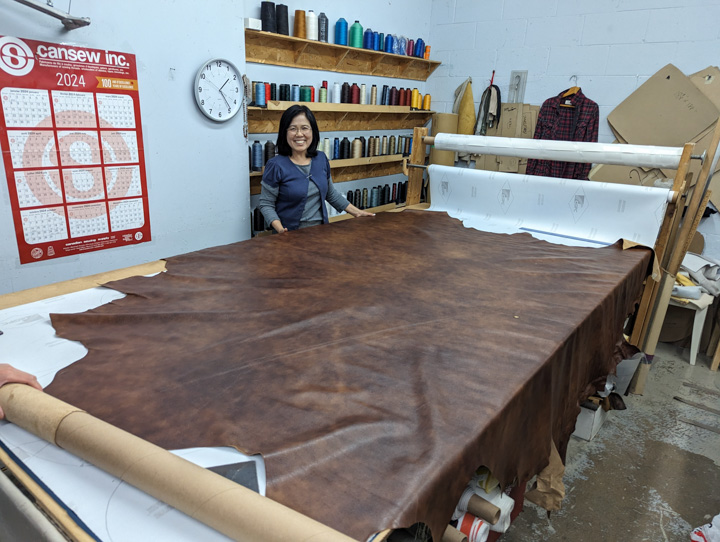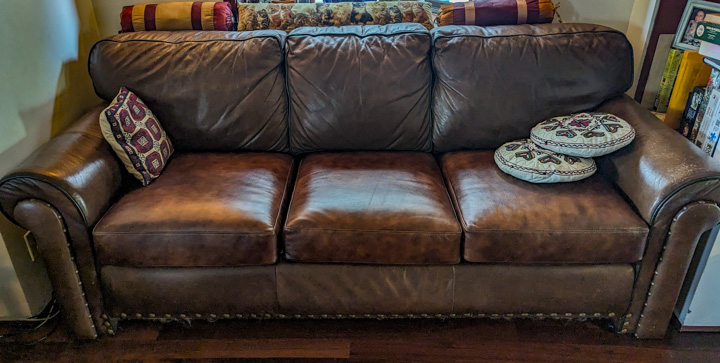
When Lauren was pregnant with a child who’s now turning 25, we purchased a comfy dark-brown leather sofa which fits our living room nicely. What with kids and relatives and employees and cats and Standards Comittees and friends and book clubs and socials, the butt-support cushions had, a quarter century later, worn out. So we had them replaced, at a fair price, by a small local business. Which is something that modern capitalism is trying to make impossible.

I’ll be honest; when we realized how ratty the sofa was getting, my first thought was “crap, gonna have to buy a sofa”. But Lauren said “No, because new sofas suck. Also, Luxcious.”
I’ll get to Luxcious in a bit, but it turns out that new sofas, by and large, really do. Why would that be? Well, check out Why Are (Most) Sofas So Bad? in Dwell magazine which has a weirdly-intermittent paywall, here’s another version.
From early in the piece: “Sofas made in the past 15 years or so are absolute garbage, constructed of sawdust compressed and bonded with cheap glue, simple brackets in place of proper joinery, substandard spring design, flimsy foam, and a lot of staples.” It’s excellent, well-written, and will take you some surprising places.
But the subtext is drearily familiar. Globalization: Check. Cheap-labor arbitrage: Check. Tax engineering: Check. High profits: Check. Flat-packing: Check. Late Capitalism: Check check fucking check.
But, quality furniture is expensive to make, and should be, but doesn’t wear out fast, thus deserves extended maintenance.
Luxcious · Its Web site (“Breathe new life into old furniture”) is way prettier than its location, in an old and extremely miscellaneous high-traffic zone: auto-body shops, hipster lounges, self-storage, beauty supplies…
They’re family-run and idiosyncratic. You have to know how to find the sketchy rear parking lot and walk in the back door. But they’re friendly and competent. Here’s the new leather they bought for the cushions.
And here’s the sofa with the re-covered cushions in place.
Yes, from this angle, the new cushions make the sofa’s back look shabby, but it’s not as obvious to the naked eye and after a decade or so we’ll never notice it.
The whole job cost us $1100 Canadian. Given that the sofa cost three-thousand-plus 1999 dollars and new leather sofas of the “not flat-packed sawdust and glue” variety quickly get into five figures, the choice was a no-brainer.
“Lifestyle” · This kind of transaction is exactly what modern capitalism is trying to stamp out.
A single-location family-owned business that provides a living for a few people? With no scope for financial engineering? And no plans for growth into unicorn status? No GenAI dimension? No marketing or public-relations people?
In conversation with venture capitalists, you hear the phrase “lifestyle business”, meaning one that is doing nicely and rewarding the people who run it and which isn’t planning for unbounded growth. The words “lifestyle business”, of course, are always uttered in a voice dripping with contempt. Luxcious is a lifestyle business.
It seems blindingly obvious that an economy with a higher proportion of lifestyle businesses is going to be more resilient, more humane, and immensely more pleasant than the one that the Leaders Of Industry are trying to build.
How would we get there from here? I’m not smart enough to figure out what the regulatory regime is that would make most of what private-equity companies do illegal and tilt the playing field in favor of resilient lifestyle businesses.
But I’d sure vote for a political party that convinced me it was trying to achieve that.
如有侵权请联系:admin#unsafe.sh


